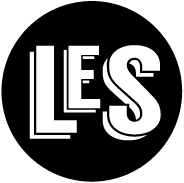Given the distinction in the last bit of verse, anything praised in the vegetable kingdom (presumably) is a flower, while any growing thing not praised (admired) is a weed. Thus ironweed (so named for its hard stem, according to my sources) is a weed if it's not admired and a flower if those lovely purple blooms earn praise for the plant. One must conclude here that the distinction is neither a good one, nor true. Yet, the verse seems to work. It has rhythm and rhyme and it teases us with an interesting distinction, eventhough the distinction does not hold up under serious examination--well, under examination. There is however, an underlying concern here as well: what is the relationship between art and truth?
If we approach this tiny bit of verse from the perspective that we have a person thinking here in the verse, then the poem allows us a glimpse into the narrator's mind. In that case the poem's level of truth doesn't reside in its assertions about weeds and flowers but about its representation of the narrator's vision. This narrator sees the world in this somewhat simplistic fashion: any plant praised is a flower; any plant not admired is a weed. The real truth of this poem, so called, is then the failure of the narrator's vision. He or she has not looked closely at the natural world of vegetation to see what it really means, which, I would argue, is what art is really about finally.
There is no ironweed in the verse. The narrator really isn't interested apparently.
